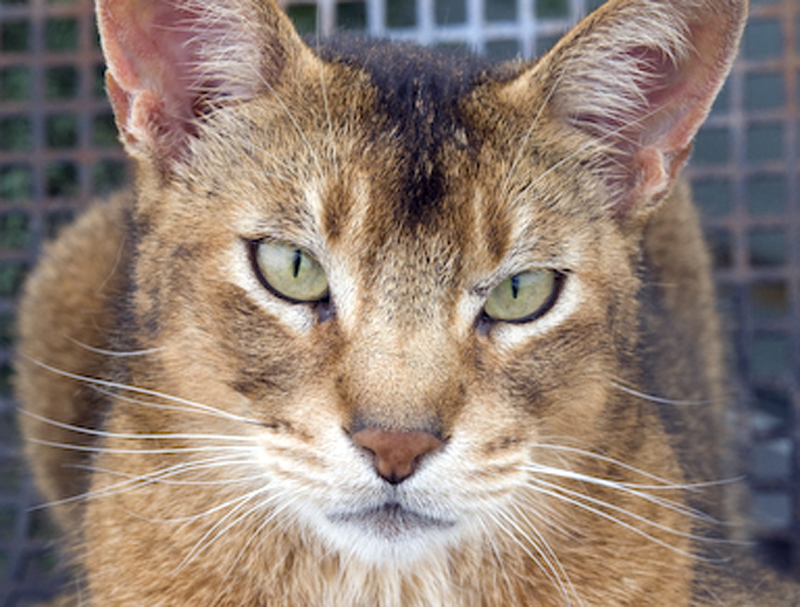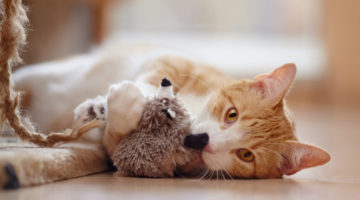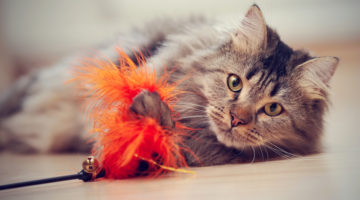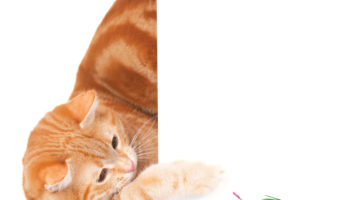Indoor cats live longer than those that roam at large, but a lot of people don’t feel right about keeping their kitties confined to the house. An outdoor enclosure can be the perfect solution.
Everyone understands the dangers of lions and tigers and bears (oh my!), but what about pesticides, antifreeze, coyotes, neighborhood dogs and traffic? Recently, two people wrote to me dispelling the myth that cats are safe outdoors as long as they’re near us or on a leash. In both cases, coyotes ran up, grabbed their beloved cats, and ran off before anyone could react.
Cats yearn to be outdoors. Living inside simply does not stimulate their natural senses as well as being out in the fresh air and sunshine, watching the birds and rolling in the grass in the summer or chasing snowflakes in the winter. But as much as we enjoy seeing our kitty companions run across the back yard, jumping like ballerinas to catch bugs, the fact remains that outdoor cats just don’t live as long because of all the safety and health risks they’re exposed to. So what’s the answer?
Our enclosure
Many kitty parents, including myself, have made the decision to buy or construct enclosures that keep their cats safe while giving them access to the outdoors. We built ours when a lynx was discovered next door, cornered up a tree by two German shepherds. There are many materials you can use, but ours is constructed of plastic piping because it repels rain and won’t rot like wood. The sides are made of heavy gauge chicken wire. When it comes to building your own cat enclosure, you’re only limited by your imagination.
- The first phase of ours looks like a hockey cage, with shelves placed at varying heights for the cats to sit and snooze on. The cats enter it through their cat door to the house so they can come inside whenever they want, or if it gets chilly or starts to rain.
- We added a 4’x4’ covered playpen so the cats are able to roll around on the patio and lie in the sun, all with a wide view of the yard and pool.
- To honor a cat’s natural instinct to roam, we added a “chunnel” which runs along the foundation of the house. It measures 1’x1’x1’ and is bolted to the house with C clamps.
- Cats love to sleep under bushes, so the chunnel opens into a 4’x6’x4’ covered raspberry bush enclosure. We put chicken wire on the sides and top of our enclosure to ward off birds of prey and prevent our cats from escaping, although we are replacing it with stronger sheep wire. The side wire is secured to the ground with tent stakes. The raspberry enclosure is 4’ high, and we added a door so we can crawl in to trim the grass and eliminate weeds. It also allows us to pick the berries, and the chicken wire roof gives the canes room to grow.
What we learned
Building and maintaining an enclosure has taught us some important things I’d like to share with you.
- When designing your enclosure, study your cat’s behaviors and build something that best suits his needs and preferences. For example, an enclosure located away from the main door of the house would be best for a timid cat who doesn’t like visitors.
- Avoid pesticides and herbicides in any enclosure. No weed is worth your cat’s life! An alternative is to pour hot water on the weeds to kill them and their seeds. Adding vinegar to the water helps kill the more stubborn weeds. Make sure the enclosure is empty of cats before you do this.
- Cleaning and maintenance is easily done with a leaf blower and pressure washer.
- Cats like to nibble and lie in grass, so an enclosure with a grassy surface is ideal. Consider adding other feline-friendly plants, like catnip.
- Originally, we trimmed the enclosure grass at a normal height, only to discover that the cats preferred making little nests in the tall grass. The taller grass also hides them from the two German shepherds next door, who like to peer through the fence and bark at them.
- If the enclosure is in full sun, it is imperative that you provide some shade. Likewise, it should be sheltered from strong winds in cooler weather.
- To keep fleas at bay, sprinkle some diatomaceous earth around the enclosure. It’s non-toxic and dries out the fleas and their eggs. Beneficial nematodes are another effective alternative.
- It’s not the size of the enclosure that’s important. Any size, whether it takes up half your yard or is secured to a single window, is excellent. Both ways, you cat can get outside, feel the wind in his fur, and soak up the sun’s vital vitamin D.
- Be creative with the items you put inside your cat’s enclosure. Make a safe, healthy and fun habitat. Include platforms, ramps, cedar tree limbs and tree trunks for scratching, 4″ rope to walk across, shelves for napping, scratching posts, and catnip and kitty grass in containers.
- Unless your cats have access to the house at all times, be sure to put a bowl of fresh water in the enclosure.
- Cats don’t like bad weather any more than we do. Don’t shut your feline in the enclosure on cold or wet days without access to the house when he wants it.
- An enclosure can be a good way to help transition an outdoor cat towards indoor living. It can satisfy his desire to be outside while keeping him safe from harm. A cat enclosure gives you peace of mind and your feline friends a taste of the wild side. It’ll add a new dimension to their lives – and yours!
Innovative idea
A cat enclosure doesn’t have to be elaborate. A neighbor of ours turned his dog’s old 6’x12’ chain link enclosure on its side. He pushed the open floor up against his home, and secured it with C clamps. A cat door leads into the enclosure from a lower kitchen cupboard. Now, if he doesn’t want his cat outside, he just closes and locks the cupboard door.
Kits for kitties
Don’t have the time or inclination to design and build your own cat enclosure? Then why not buy one ready-made? A number of companies offer enclosures and enclosure kits designed especially for cats. Prices can range from under $200 to over $2,000, depending on size, style and materials used. Be sure to buy a quality product made from safe, sturdy materials.
- Kittywalk Systems – makes a variety of hand-crafted enclosure systems for lawns and patios that allow you to create your own configuration. The enclosures are portable so you can give your cat a change of scene. www.kittywalksystems.com
- C&D Pet Products – offers 12 cat enclosure sizes as well as accessories including shelves and a UV protective shade cloth. The enclosures are made from solid redwood and galvanized steel wire. www.cdpets.com
- The Cat’s Den – sells 13 enclosure kits in a range of sizes and configurations. Some include tunnels, stairs, shelves and bridges. Also offers custom designs as well as kitty hammocks and awnings. www.thecatsden.net







No Comment